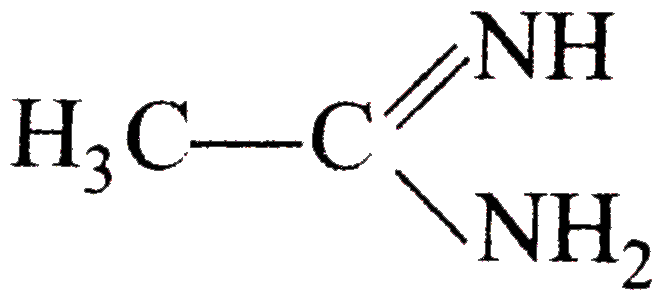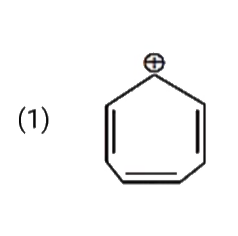The correct order of stability of given carbocations is
(i) NO2—CH2—CH+2 (ii) NH2—CH2—CH+2 (iii) CH3—O—CH+2
(iv) HO—CH+2 (v) NH2—CH+2 (vi) NO2—CH+2
(vii)CH3O—CH2—CH+2
vii>iii>ii>iv>v>i>vi
v>iii>iv>ii>vi>i>vii
v>iv>iii>ii>vii>i>vi
vi>i>vii>iii>ii>v>iv
To determine the correct order of stability of the given carbocations, we will analyze each carbocation based on the effects of substituents attached to the carbon atom bearing the positive charge. The stability of carbocations is influenced by both the inductive effect (−I) and the resonance effect (+M).
1. Identify the Carbocations:
- (i) NO2—CH2—CH2+
- (ii) NH2—CH2—CH2+
- (iii) CH3—O—CH2+
- (iv) HO—CH2+
- (v) NH2—CH2+
- (vi) NO2—CH2+
- (vii) CH3O—CH2—CH2+
2. Analyze the Effects:
- −I Effect: Groups like NO2 and NH2 exert a negative inductive effect, pulling electron density away from the carbocation, which destabilizes it.
- +M Effect: Groups like O and NH2 can donate electron density through resonance, stabilizing the carbocation.
3. Rank the Carbocations:
- (i) NO2—CH2—CH2+: Strong −I effect due to NO2, highly destabilized.
- (ii) NH2—CH2—CH2+: Moderate +M effect from NH2, stabilizing.
- (iii) CH3—O—CH2+: +M effect from O, stabilizing, but also has −I from CH3.
- (iv) HO—CH2+: Strong +M effect from OH, stabilizing.
- (v) NH2—CH2+: +M effect from NH2, stabilizing.
- (vi) NO2—CH2+: Strong −I effect from NO2, destabilizing.
- (vii) CH3O—CH2—CH2+: +M effect from O, stabilizing.
4. Final Ranking:
- The most stable carbocation will be the one with the strongest +M effect and the least −I effect.
- Order of stability from most stable to least stable:
1. (iv) HO—CH2+ (strong +M effect)
2. (ii) NH2—CH2—CH2+ (good +M effect)
3. (v) NH2—CH2+ (good +M effect)
4. (iii) CH3—O—CH2+ (moderate +M effect)
5. (vii) CH3O—CH2—CH2+ (moderate +M effect)
6. (i) NO2—CH2—CH2+ (strong −I effect)
7. (vi) NO2—CH2+ (strong −I effect)
Conclusion:
The correct order of stability of the given carbocations is:
(iv) > (ii) > (v) > (iii) > (vii) > (i) > (vi)
- (i) NO2—CH2—CH2+
- (ii) NH2—CH2—CH2+
- (iii) CH3—O—CH2+
- (iv) HO—CH2+
- (v) NH2—CH2+
- (vi) NO2—CH2+
- (vii) CH3O—CH2—CH2+
- −I Effect: Groups like NO2 and NH2 exert a negative inductive effect, pulling electron density away from the carbocation, which destabilizes it.
- +M Effect: Groups like O and NH2 can donate electron density through resonance, stabilizing the carbocation.
- (i) NO2—CH2—CH2+: Strong −I effect due to NO2, highly destabilized.
- (ii) NH2—CH2—CH2+: Moderate +M effect from NH2, stabilizing.
- (iii) CH3—O—CH2+: +M effect from O, stabilizing, but also has −I from CH3.
- (iv) HO—CH2+: Strong +M effect from OH, stabilizing.
- (v) NH2—CH2+: +M effect from NH2, stabilizing.
- (vi) NO2—CH2+: Strong −I effect from NO2, destabilizing.
- (vii) CH3O—CH2—CH2+: +M effect from O, stabilizing.
- The most stable carbocation will be the one with the strongest +M effect and the least −I effect.
- Order of stability from most stable to least stable:
1. (iv) HO—CH2+ (strong +M effect)
2. (ii) NH2—CH2—CH2+ (good +M effect)
3. (v) NH2—CH2+ (good +M effect)
4. (iii) CH3—O—CH2+ (moderate +M effect)
5. (vii) CH3O—CH2—CH2+ (moderate +M effect)
6. (i) NO2—CH2—CH2+ (strong −I effect)
7. (vi) NO2—CH2+ (strong −I effect)
The correct order of stability of the given carbocations is:
(iv) > (ii) > (v) > (iii) > (vii) > (i) > (vi)
Topper's Solved these Questions
- ORGANIC CHEMISTRY : SOME BASIC PRINCIPLES AND TECHNIQUES BOOK - AAKASH INSTITUTE ENGLISHCHAPTER - ORGANIC CHEMISTRY : SOME BASIC PRINCIPLES AND TECHNIQUES EXERCISE - Assignment(SECTION C)
73 Videos
- ORGANIC CHEMISTRY : SOME BASIC PRINCIPLES AND TECHNIQUES BOOK - AAKASH INSTITUTE ENGLISHCHAPTER - ORGANIC CHEMISTRY : SOME BASIC PRINCIPLES AND TECHNIQUES EXERCISE - Assignment(Section-D)(Assertion - Reason Type Questions)
15 Videos
- ORGANIC CHEMISTRY : SOME BASIC PRINCIPLES AND TECHNIQUES BOOK - AAKASH INSTITUTE ENGLISHCHAPTER - ORGANIC CHEMISTRY : SOME BASIC PRINCIPLES AND TECHNIQUES EXERCISE - Assignment(SECTION-A)
68 Videos
- MOCK_TEST_20BOOK - AAKASH INSTITUTE ENGLISHCHAPTER - MOCK_TEST_20EXERCISE - EXAMPLE
29 Videos
- ORGANIC CHEMISTRY: SOME BASIC PRINCIPLE AND TECHNIQUESBOOK - AAKASH INSTITUTE ENGLISHCHAPTER - ORGANIC CHEMISTRY: SOME BASIC PRINCIPLE AND TECHNIQUESEXERCISE - TRY YOURSELF
28 Videos
Similar Questions
Knowledge Check
The order of decreasing stability of the following carbanions is
(i) (CH3)3C−
(ii) (CH3)2CH−
(iii) CH3CH−2
(iv) C6H5CH−2A(i)gt(ii)gt(iii)gt(iv)B(iv)gt(iii)gt(ii)gt(i)C(iv)gt(i)gt(ii)gt(iii)D(iii)gt(ii)gt(i)gt(Iv)
The correct order of basicities of the following compounds is -
(I)_E01_945_Q01.png) , (II) CH3CH2NH2 : (III) (CH3)2NH , (IV) CH3−O∣∣C−NH2⎞⎟
⎟⎠
, (II) CH3CH2NH2 : (III) (CH3)2NH , (IV) CH3−O∣∣C−NH2⎞⎟
⎟⎠
View SolutionWhich is the correct order of increasing basicity?
(A) CH3CH2CH3<CH3CH2SH<CH3CH2OH< CH3CH2NH2
(B)CH3CH2CH3<CH3CH2OH<CH3CH2SH< CH3CH2NH2
(C) CH3CH2NH2<CH3CH2SH<CH3CH2OH< CH3CH2CH3
(D)CH3CH2CH3<CH3CH2OH<CH3CH2NH2< CH3CH2SH
View SolutionThe correct order of basicities of the following compounds is
 , CH3CH2NH2(2)
, CH3CH2NH2(2)
(CH3)2NH(3) CH3CONH2(4)
View SolutionGive the order of reactivityh towards SN1 reaction of the following:
i. ClCH2CH=CH2
ii. CH3CH2CH2Cl
iii. CH3CH=CHCl
View SolutionArrange the following compounds in decreasing order of acidity.
(i) ClCH2CH2CH2COOH
(ii) CH3CHClCH2COOH
(iii) CH3CH2CHClCOOH
View SolutionCorrect order of reactivity -
(A) CH2=CH2>CH3−CH=CH2>(CH3)2C=CH2
(B) CH2=CH2>CH3−CH=CH2<(CH3)2C=CH2
(C) CH2=CH2<(CH3)2C=CH2<CH3−CH=CH2
(D) CH3−CH=CH2<CH2=CH2<(CH3)2C=CH2
View SolutionThe correct order of increasing basic nature for the bases NH3CH3NH2and(CH3)2NH is :
View Solution

